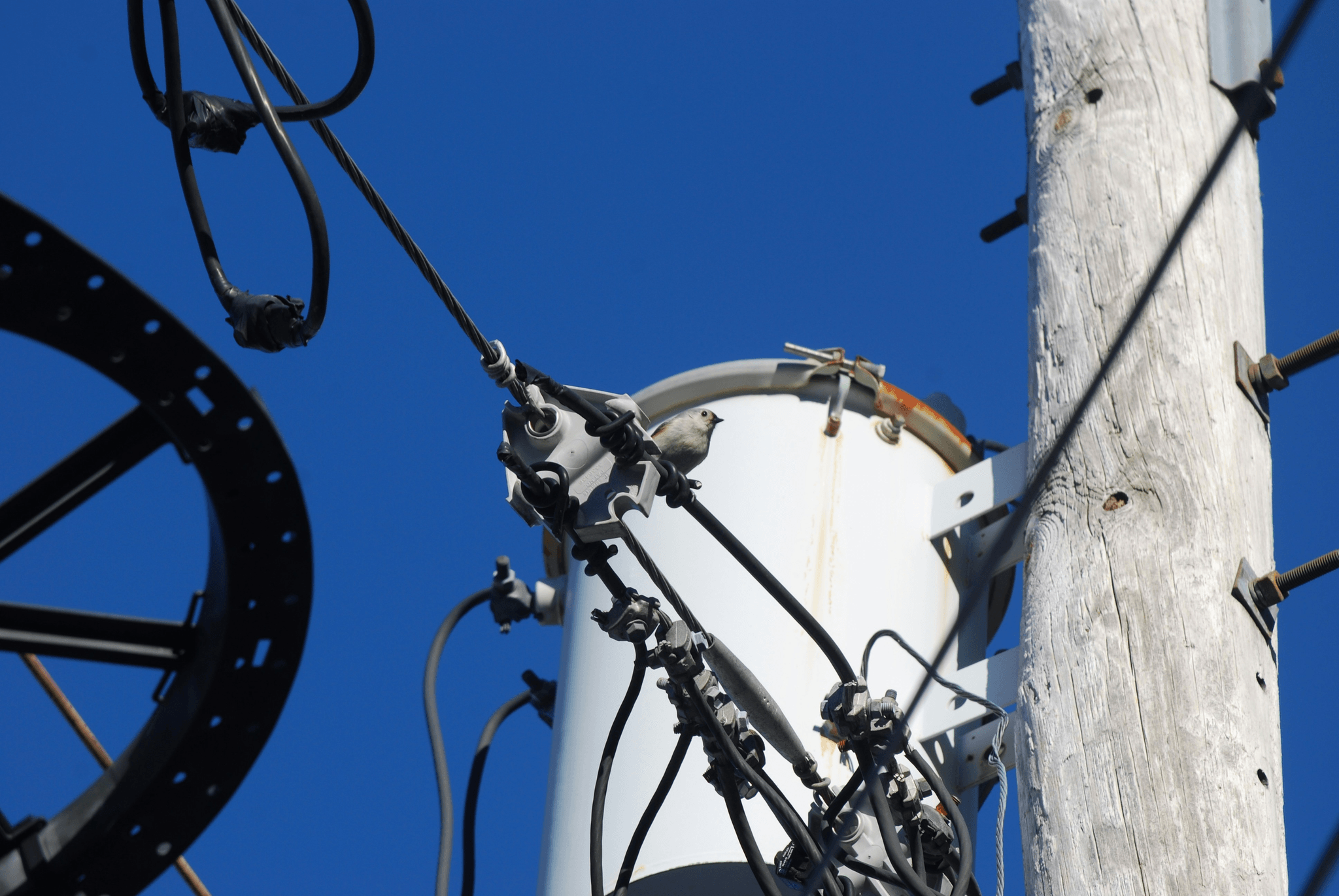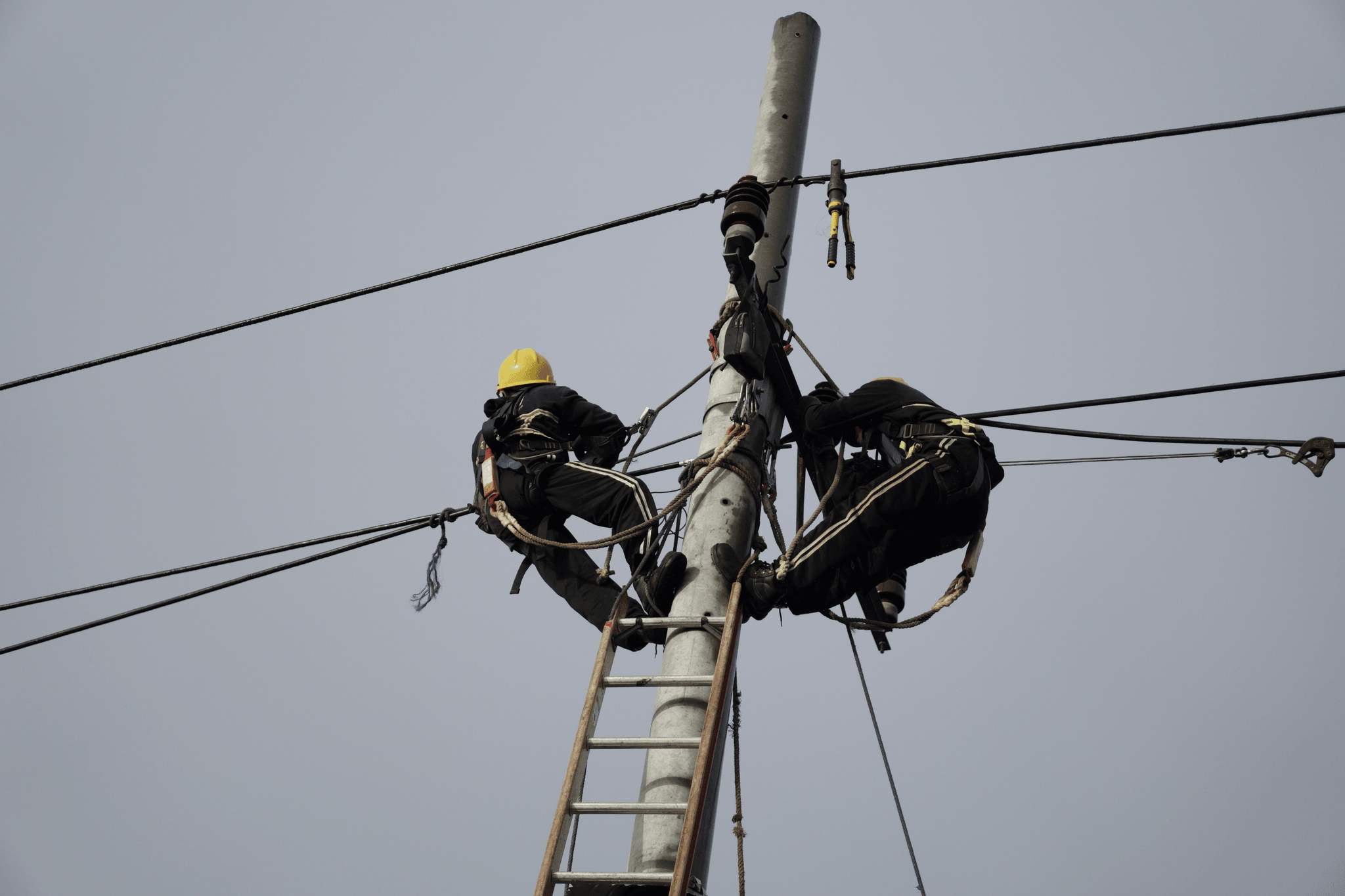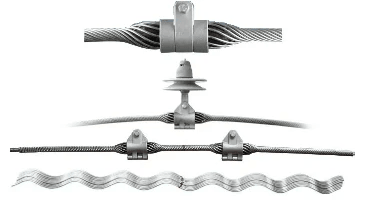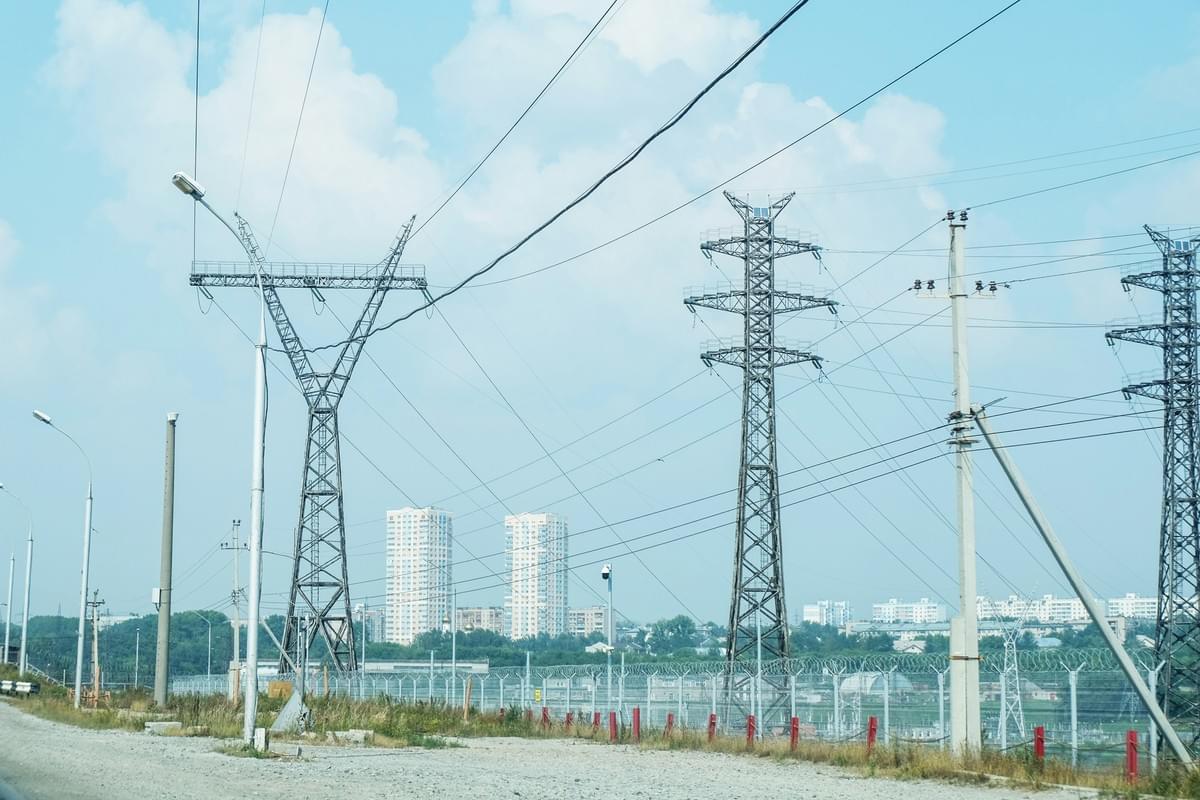Introduction
These robust fasteners are essential for maintaining stability and integrity in numerous applications, from towering utility poles to sprawling wind farms. Understanding the significance of anchor rods is vital for anyone involved in construction or infrastructure development.
Understanding Anchor Rod Importance
Anchor rods are not just metal sticks shoved into the ground; they are engineered components designed to withstand immense forces and provide lasting support. Their importance cannot be overstated, especially in environments where safety and durability are paramount. Without reliable anchor rods, structures like power lines and utility poles would be at risk of collapse, jeopardizing both functionality and safety.
Key Applications of Anchor Rods
The applications of anchor rods are as varied as they are critical. In electrical infrastructure, Power Line Anchors ensure that overhead lines remain secure against high winds and adverse weather conditions. Similarly, Utility Pole Anchors stabilize poles that carry electricity or telecommunications, while Guy Wire Anchor Rods provide additional support for tall structures that might otherwise sway or topple.
Overview of Different Anchor Rod Types
Diving into the types of anchor rods reveals a fascinating world tailored to meet specific needs across different sectors. Power Line Anchors feature unique designs suited for high-tension applications, while Utility Pole Anchors focus on vertical stability under load. Guy Wire Anchor Rods serve a distinct purpose by anchoring wires that help maintain tension on tall structures—each type engineered with precision for optimal performance.
What is an Anchor Rod?

Anchor rods are essential components in various structural applications, providing stability and support to a range of constructions. They are typically long, heavy-duty bolts that secure structures to their foundations or the ground, ensuring that everything stays in place against forces such as wind, seismic activity, and other stresses. Understanding what an anchor rod is and its purpose can clarify its significance in engineering and construction.
Definition and Purpose
An anchor rod is defined as a heavy-duty fastener that connects structures to their foundations or the ground, effectively anchoring them in place. Its primary purpose is to resist tensile forces that could otherwise cause structural failure or displacement. Whether it’s a power line anchor stabilizing overhead cables or a utility pole anchor securing poles against lateral forces, these rods play a vital role in maintaining structural integrity.
Importance in Structural Applications
The importance of anchor rods in structural applications cannot be overstated; they ensure safety and reliability across various settings. In building construction, for instance, they help secure walls and roofs against uplift during storms or earthquakes. Similarly, guy wire anchor rods provide critical support for towers by stabilizing them against wind loads, showcasing how different types of anchor rods cater to specific needs within electrical infrastructure and beyond.
Comparison to Other Fastening Methods
When compared to other fastening methods like screws or regular bolts, anchor rods stand out due to their strength and durability under extreme conditions. While traditional fasteners may suffice for lighter applications, they often lack the load-bearing capacity needed for heavy-duty tasks like anchoring power lines or utility poles securely into the ground.
Types of Anchor Rods

Power Line Anchor Variants
Power line anchors are specially designed to secure electrical transmission lines against environmental forces such as wind and ice. These anchor rods come in different variants, each tailored for specific load requirements and soil conditions. Whether it's a helical anchor or a driven rod, choosing the right power line anchor can significantly enhance the stability and safety of electrical infrastructure.
The materials used in power line anchors are often galvanized steel or other corrosion-resistant alloys to withstand harsh weather conditions. Their design typically includes features that allow for easy installation while ensuring maximum holding capacity. With these anchors firmly in place, they provide essential support that keeps our energy flowing reliably.
Utility Pole Anchor Features
Utility pole anchors are another vital type of anchor rod that keeps our electrical grids intact. These anchors are specifically crafted to support utility poles, which bear heavy loads from wires and transformers while also resisting lateral forces from wind and other environmental factors. The right utility pole anchor not only ensures structural integrity but also enhances safety by preventing pole tilt or collapse.
These anchors usually feature robust designs with deep embedment options for added stability in various soil types. Additionally, they may come equipped with adjustable brackets that facilitate easy alignment during installation. Overall, utility pole anchors play a critical role in maintaining the reliability of our electrical distribution systems.
Guy Wire Anchor Rods Overview
Guy wire anchor rods serve as unsung heroes in stabilizing structures like towers and masts through tensioned cables known as guy wires. These specialized anchor rods are essential for ensuring that tall structures remain upright under challenging weather conditions or when subjected to heavy loads. Without reliable guy wire anchors, many communication towers would sway precariously or even topple over.
Typically made from high-strength steel, guy wire anchors must endure significant tensile forces while maintaining their integrity over time. They often include features such as eyelets or loops for secure attachment points where guy wires can be fastened effectively. In summary, guy wire anchor rods contribute significantly to the overall stability and functionality of various vertical structures within our infrastructure.
Application of Anchor Rods

Anchor rods play a crucial role in various applications, providing stability and support across multiple industries. Their versatility makes them indispensable in electrical infrastructure, building construction, and even in the rapidly growing wind energy sector. Understanding the specific applications of anchor rods can help in selecting the right type for any project.
Use in Electrical Infrastructure
In the realm of electrical infrastructure, anchor rods are vital for securing power lines and ensuring reliable service. Power line anchors help maintain tension on cables, preventing sagging or excessive movement during severe weather conditions. Utility pole anchors also provide stability by anchoring poles to the ground, ensuring they withstand strong winds and other environmental stresses.
The use of guy wire anchor rods is another key aspect of this application, as they support vertical structures like towers and poles by counteracting lateral forces. These guy wire systems rely on anchor rods to ensure that everything remains upright and functional over time. Overall, incorporating robust anchor rod solutions enhances safety and reliability within electrical systems.
Role in Building Construction
They are commonly used to attach structural elements like beams to foundations or walls, providing a secure connection that can withstand heavy loads and seismic activity. The right types of anchor rods can make all the difference between a stable structure and one prone to failure.
In addition to their primary function as fasteners, anchor rods also offer flexibility in design; they can be tailored to meet specific engineering requirements depending on the project's needs. This adaptability allows architects and engineers to create innovative designs without compromising safety or durability. Thus, using quality anchor rods is fundamental for ensuring long-lasting buildings that adhere to industry standards.
Benefits in Wind Energy Projects
Wind energy projects have gained significant traction as renewable energy sources continue to rise in importance globally; here too, anchor rods play an essential role. In wind turbine installations, these sturdy components secure turbines against high winds while maintaining their position on foundations or platforms—ensuring efficient operation even under challenging conditions. The unique demands of wind energy projects necessitate specialized types of anchor rods designed specifically for this purpose.
Moreover, using well-engineered anchor rod solutions helps reduce maintenance costs over time by minimizing wear caused by environmental factors like corrosion or soil movement around turbine bases. Additionally, anchoring systems equipped with advanced materials ensure longevity while supporting sustainability goals within the industry—a win-win situation! As wind energy continues its upward trajectory, understanding how best to utilize different types of anchor rods will remain critical for project success.
Spark Fittings and Armor Rods

When it comes to enhancing the durability and performance of anchor rods, particularly in power line installations and utility pole applications, armor rods play a crucial role. These fittings not only provide additional support but also help protect the anchor rod itself from environmental factors that could compromise its integrity. Understanding the material choices available for armor rods is essential for ensuring their effectiveness in various applications.
Material Choices for Armor Rods
Armor rods are typically crafted from materials that strike a balance between strength and flexibility, ensuring they can withstand various stresses without fracturing. Common choices include high-strength aluminum alloys and composite materials, which offer excellent resistance to wear while remaining lightweight. Additionally, the selection of materials often depends on the specific type of anchor rod being used—whether it's a power line anchor or a guy wire anchor rod—each requiring tailored properties to suit its unique application.
Importance of Corrosion Resistance
Corrosion resistance is paramount when selecting armor rods for any application involving anchor rods, especially in harsh environmental conditions like coastal areas or regions with heavy rainfall. The right materials can prevent rust and degradation over time, significantly extending the lifespan of both the armor rod and the underlying anchor rod itself. By investing in corrosion-resistant solutions, users can ensure that their utility pole anchors remain reliable and effective for years to come.
Custom Solutions from Spark Fittings
Spark Fittings specializes in providing custom solutions tailored to meet specific needs within the realm of anchor rod applications. Whether you require a specialized design for your guy wire anchor rods or need adjustments for your utility pole anchors, they have you covered with bespoke options that enhance performance while maintaining structural integrity. Their commitment to innovation ensures that every project benefits from high-quality materials designed specifically for optimal function in diverse environments.
Installation Best Practices

When it comes to the installation of anchor rods, a few best practices can make all the difference in ensuring their effectiveness and longevity. Each type of anchor rod, whether it's a power line anchor, utility pole anchor, or guy wire anchor rod, has specific requirements that must be adhered to for optimal performance. Following these guidelines not only enhances structural integrity but also minimizes potential issues down the line.
Guidelines for Effective Installation
Effective installation begins with understanding the specific application of anchor rods. For instance, when installing a power line anchor, ensure that the soil conditions are assessed properly to determine if additional reinforcement is needed. Additionally, aligning the utility pole anchors at appropriate angles is crucial as this directly impacts load distribution and overall stability.
Another vital guideline is to follow manufacturer specifications closely regarding torque settings and depth requirements for each type of anchor rod. This ensures that your guy wire anchor rods are neither too loose nor too tightly installed, which could compromise their function. Lastly, always double-check your measurements before drilling or embedding; precision during installation saves you from headaches later on.
Common Mistakes to Avoid
Even seasoned professionals can stumble into common pitfalls during installation that could jeopardize the integrity of their work with anchor rods. One prevalent mistake is neglecting site assessment—failing to evaluate soil type or moisture content can lead to inadequate anchoring solutions like utility pole anchors not performing as expected. Be sure to avoid rushing through measurements; inaccurate placements can result in misalignment and increased stress on your structures.
Another mistake often seen involves using incorrect tools or equipment for installation; using makeshift tools may lead to improper torque application on power line anchors or damaging guy wire anchor rods during placement. It's also essential not to overlook safety measures—ensuring that all personnel are equipped with proper safety gear protects everyone involved in the project from potential hazards associated with heavy lifting and drilling operations.
Maintenance Tips for Longevity
To keep your anchor rods functioning optimally over time, regular maintenance checks are essential. Inspecting power line anchors and other types of anchors periodically allows you to identify any signs of corrosion or wear early on—this is especially important in harsh weather conditions where exposure can accelerate deterioration. Additionally, consider applying protective coatings specifically designed for metal surfaces; this enhances corrosion resistance significantly.
For utility pole anchors and guy wire anchor rods alike, ensure that surrounding vegetation is kept clear as roots can disrupt anchorage stability over time if left unchecked. Keep an eye on tension levels in guy wires connected to these anchors; maintaining proper tension ensures they don't become loose due to environmental factors like wind or soil shifts over time. Lastly, document inspections and maintenance activities so you have a clear record should any issues arise down the road.
Conclusion
In conclusion, anchor rods play a pivotal role in maintaining structural integrity across various applications. From the robust demands of power line anchors to the supportive features of utility pole anchors and guy wire anchor rods, understanding their importance cannot be overstated. As we move forward, the significance of choosing the right types of anchor rods for specific needs remains paramount for safety and stability.
Ensuring Structural Integrity with Anchor Rods
Ensuring structural integrity with anchor rods is crucial for any construction or infrastructure project. These essential components provide stability and support in various settings, from towering electrical infrastructures to residential buildings. By effectively utilizing power line anchors, utility pole anchors, and guy wire anchor rods, engineers can enhance the overall strength and reliability of structures.
The Future of Anchor Rod Technology
The future of anchor rod technology looks promising as innovations continue to emerge in materials and designs. As industries seek more efficient solutions, advancements in corrosion resistance and load-bearing capabilities will become increasingly important for applications like wind energy projects. With an eye on sustainability, manufacturers are likely to develop eco-friendly options that still meet rigorous performance standards for all types of anchor rods.
Choosing the Right Anchor Rod for Your Needs
Choosing the right anchor rod for your needs requires careful consideration of several factors including application type and environmental conditions. Whether you’re installing a power line anchor or a utility pole anchor, understanding your specific requirements will lead to better outcomes. Always consult with professionals who can guide you through selecting from the myriad types of anchor rods available on the market today.

